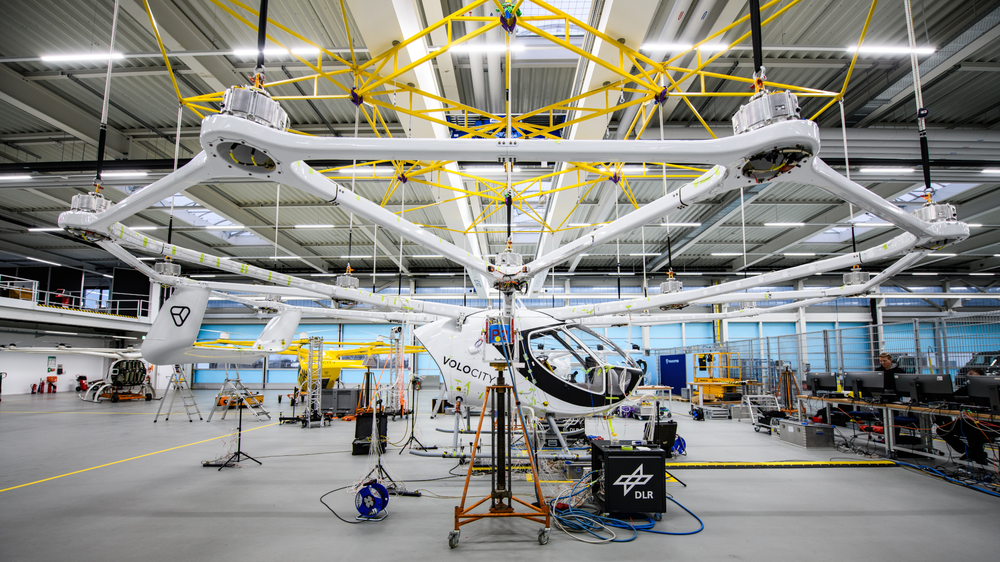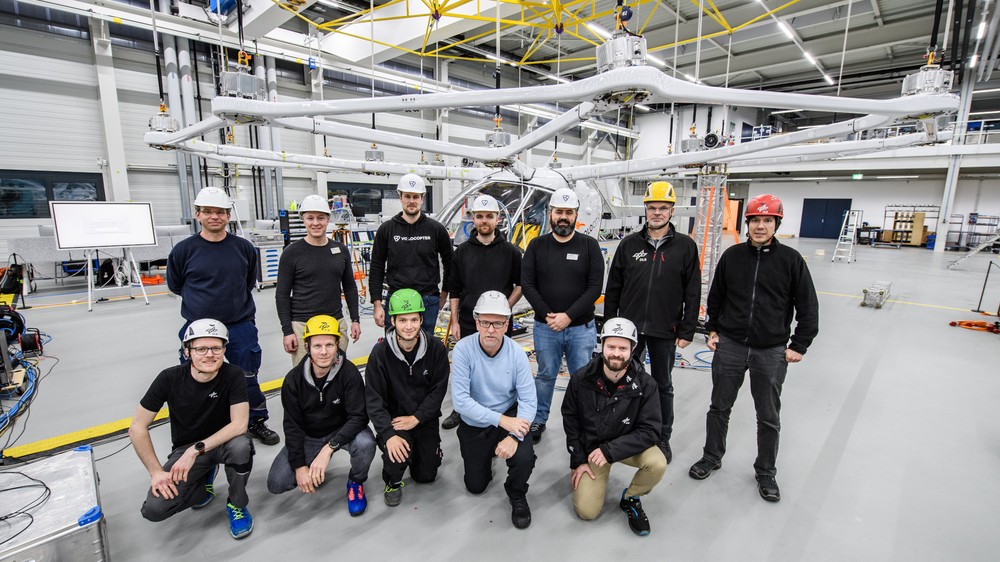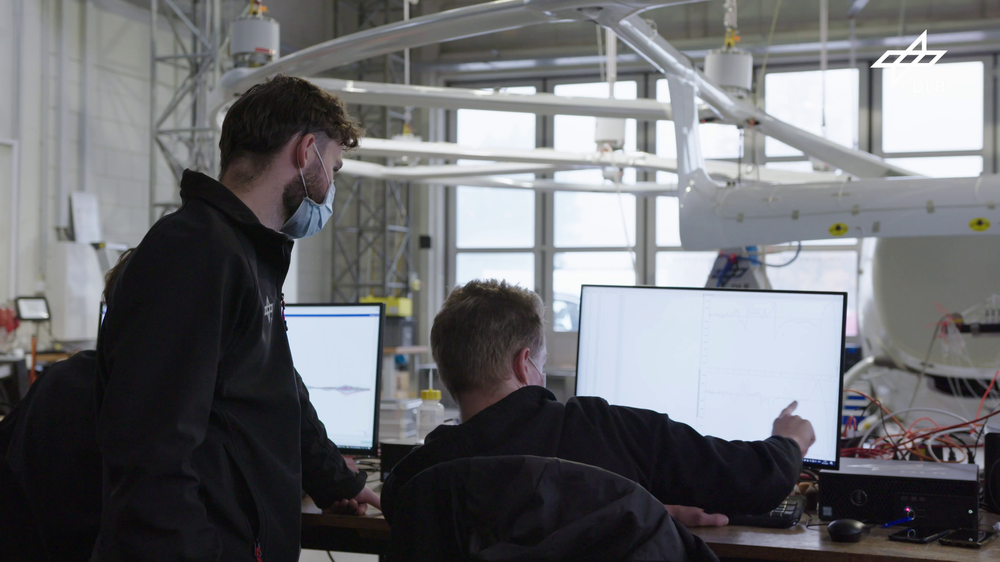DLR successfully tests Volocopter's air taxi


Volocopter

- DLR employees in Göttingen have successfully tested an air taxi from German manufacturer Volocopter.
- The team conducted a comprehensive vibration test on the VoloCity air taxi.
- The unique design of air taxis presents a challenge in terms of how they vibrate during flight.
- Focus: Aviation, air taxis
The German Aerospace Center (Deutsches Zentrum für Luft- und Raumfahrt; DLR) has successfully conducted static vibration tests on the VoloCity air taxi from the German company Volocopter. Tests were carried out on behalf of Volocopter to further improve the safety and efficiency of their air taxi.
The Volocity model features a unique design with 18 electric motors arranged in a circular elastic ring. "This distinctive feature poses a major challenge for the taxi’s aeroelastic vibration behaviour," explains Keith Soal, from the DLR Institute of Aeroelasticity in Göttingen. During the vibration test, key structural behaviours were identified. These dynamic properties can now be incorporated into the air taxi’s flight control system, allowing for its better handling during specific flight manoeuvres.
Properties confirmed
During the one-week vibration test in Bruchsal, the fully assembled aircraft structure was made to vibrate. To do this, the aircraft was suspended from soft rubber ropes with 210 acceleration sensors that gathered data on the structure's behaviour as if in flight. DLR scientists in Göttingen analysed the results in real-time and provided immediate feedback to Volocopter. This test is a critical step towards obtaining flight certification for the VoloCity.
"The ground vibration test has determined the dynamic properties of the VoloCity and confirmed the model predictions – an important milestone that brings us closer to certification," said Hugo Nunes, Aircraft Dynamics Manager at Volocopter.
An aeroelastic vibration test is a method used to analyse the structural resonances of an aircraft under various loads. These tests are vital for identifying potential issues with vibrations and oscillations early on, ensuring the aircraft meets rigorous safety and performance standards.

Video: DLR conducts vibration tests on the Volocopter air taxi
Your consent to the storage of data ('cookies') is required for the playback of this video on Quickchannel.com. You can view and change your current data storage settings at any time under privacy.
Innovative air transport for the city
An air taxi is an innovative aircraft designed to transport people or goods over short distances in urban areas. It combines the advantages of a helicopter with the efficiency and environmental benefits of electric propulsion.
Aeroelasticity, a specialised field within aerospace engineering, examines the interaction between aerodynamic forces and the elastic vibrations of a structure. The field is particularly relevant in aviation – affecting aeroplanes, helicopters, drones and air taxis – but also when it comes to wind energy, where the aeroelastic interactions of rotor blades and entire wind turbines are similarly analysed. Ensuring the stability, controllability and structural integrity of these systems is of paramount importance, and the DLR Institute of Aeroelasticity in Göttingen is recognised as a European leader in vibration testing for aircraft and wind turbines.
The Göttingen-based institute previously conducted a vibration test on a predecessor model of the VoloCity in 2021. The findings from that test have informed the development of this improved successor model.
